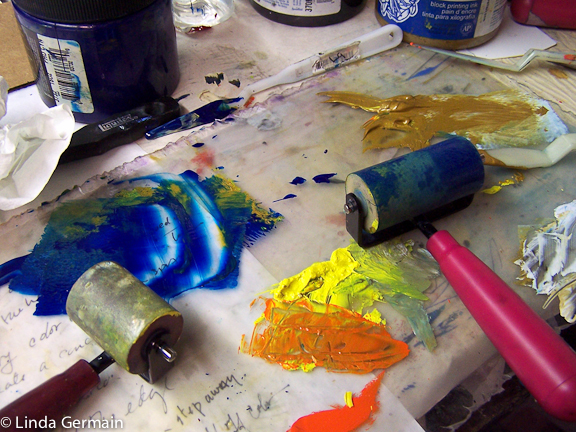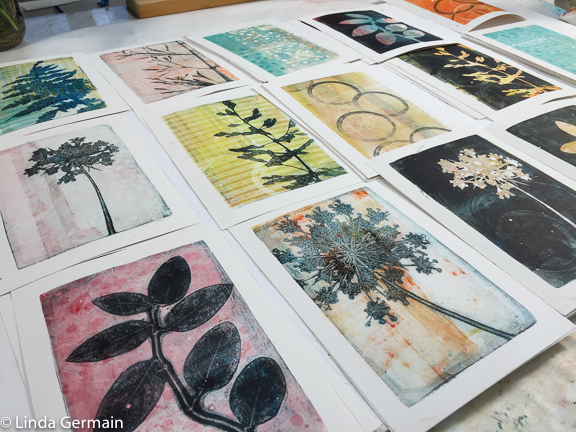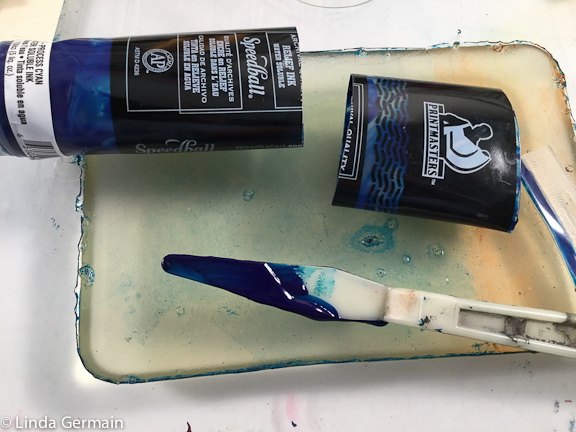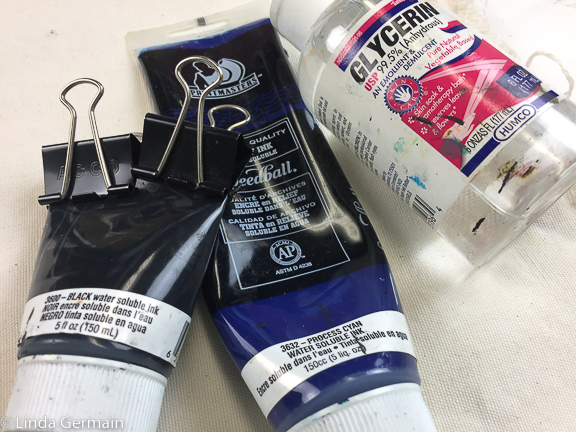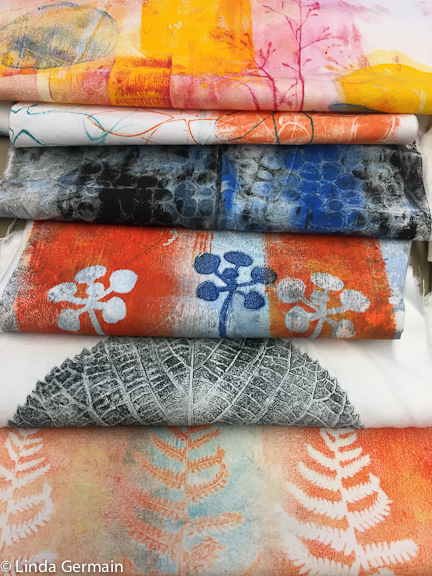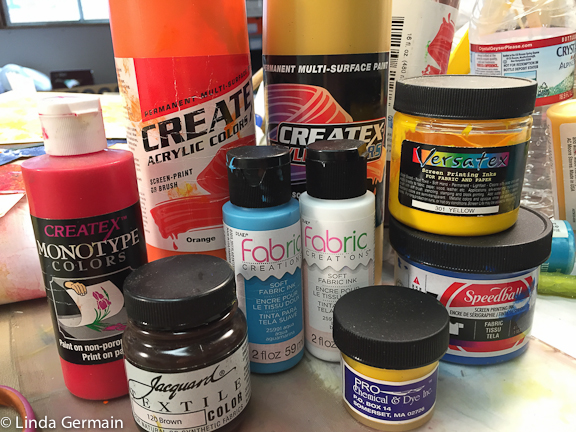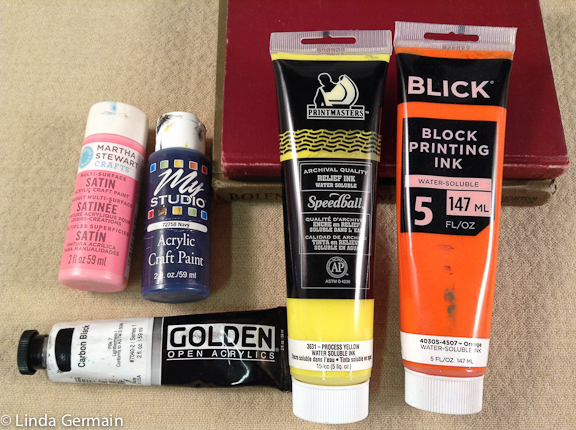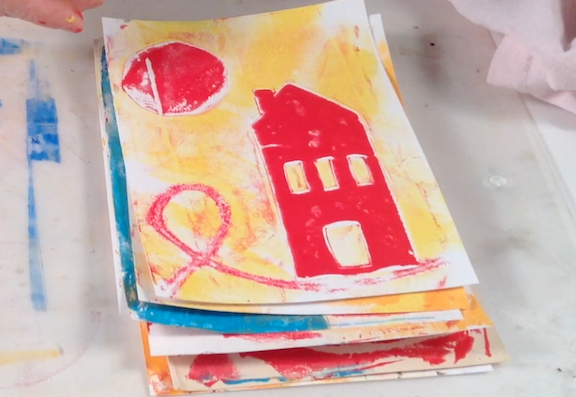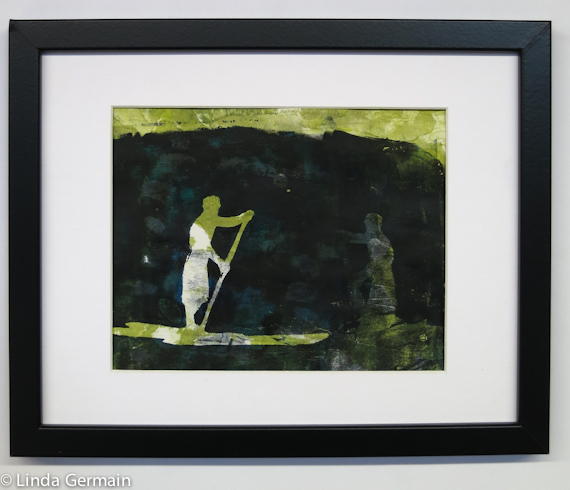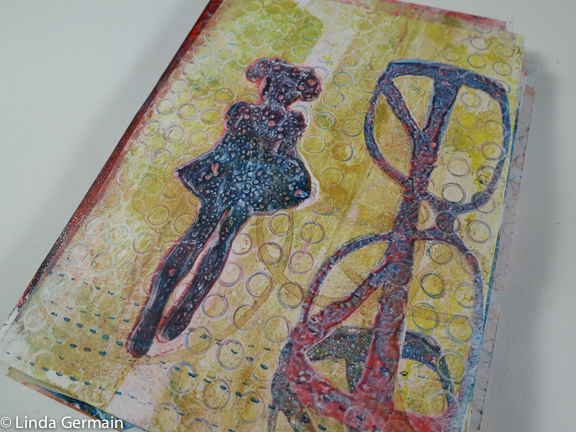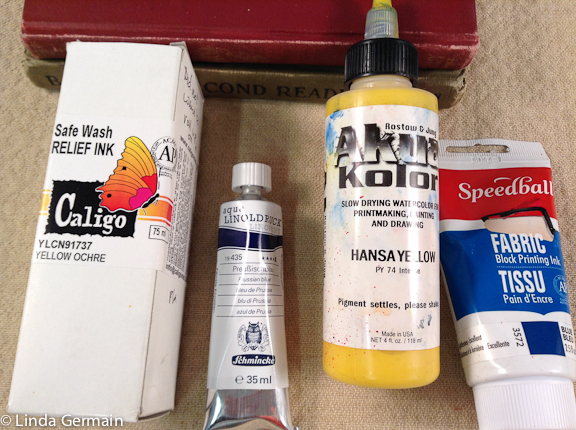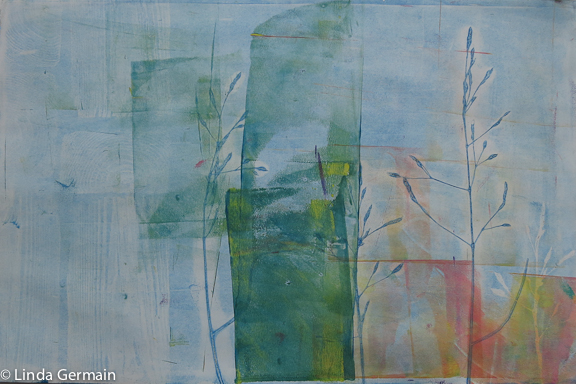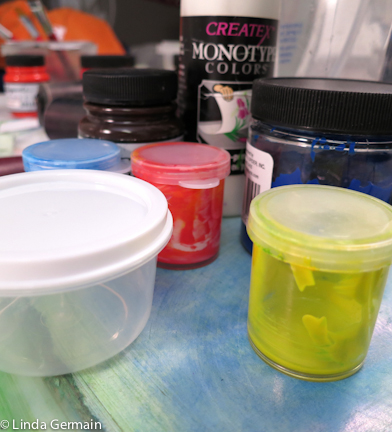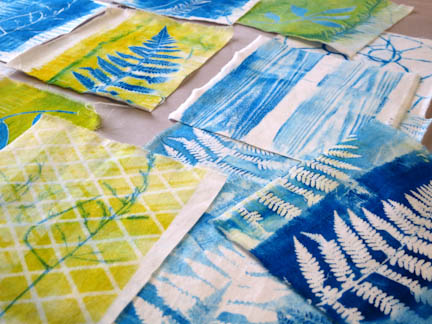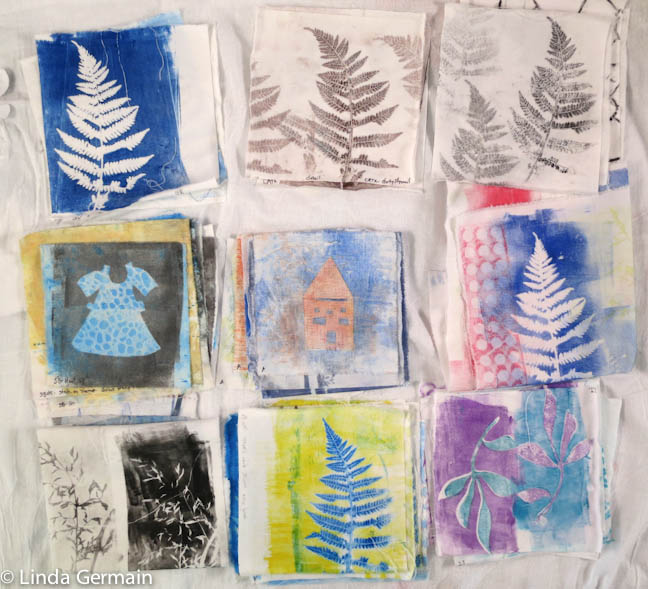Speedball block printing ink for Gelatin Printmaking
I use speedball water soluble block printing ink for gelatin printing with the homemade glycerin and water plate.
I know a lot of folks use a variety of acrylic paints with the commercial plates that you can buy. One of my mottos is to “use what you have.” It is more common to have acrylic paint than block printing ink, so it makes sense that a lot of people would print with acrylic paint.
I have tried gelatin printing with:
- inexpensive craft paint
- Golden open acrylics
- gouache
- Akua liquid pigment
- Akua intaglio
They all work to produce a monotype print. The important question is can I obtain the kind of marks, impressions and layers with any given ink/paint.
When trying a new ink, I like to buy a small tube of black ink and print with it and see what is possible. That way I have not invested a lot of money in supplies before I know if I like them. (Believe me I have done that many times)
I wanted to share why I like the speedball water soluble blocking inks when printing with the homemade gelatin and glycerin plate.
- They are water based and the plate is water based which means they roll up nicely and should not bead up on the plate.
- They are non-toxic.
- They are super easy to clean up with water.
- A little goes a long way. One dollop of ink can last several printing sessions compared to a dollop of acrylic paint.
- It is important to me that the ink stay wet and workable. Speedball inks can be reactivated with a spritz of water and a drop of glycerin.
- The have the proper viscosity to roll up with a brayer.
- But the most important factor is that I like the type of impressions that I can get with the speedball water based block printing inks.
- I can get light transparent layers
- Lots of ghost impressions
- Lovely detailed impression from the ink under my stencils
- The ink sticks and transfers from brayer to plate to stencils/tools a finally to the paper.
Of course the ink has limitations and draw backs, but for the kind of printing I do, I can accept them.
The biggest limitation is that the ink does not dry fixed. So if it gets wet with water or glue the image can smear. I overcome this by working quickly and with light pressure.
I use every last drop. I cut the tube when the ink gets low and scrape out ink as needed.
I hope this helps you when you go to buy and test out a new ink for gelatin printmaking. If you would like to explore gelatin printmaking with speedball block printing inks, then join us in the online printmaking class, Gelatin Print Project. Class starts soon.
Speedball block printing ink for Gelatin Printmaking Read More »
